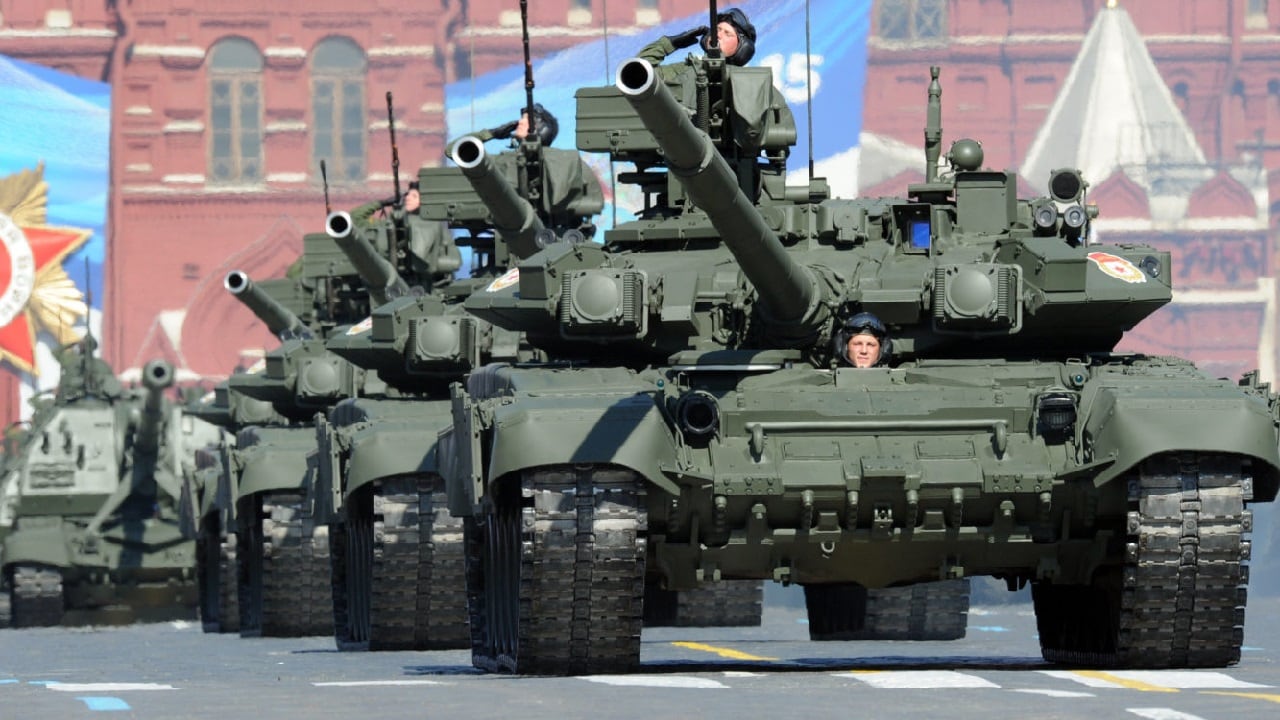For at least the second time in as many months, Ukrainian paratroopers have been credited with taking out Russian tanks with man-portable rocket launchers. Earlier this week, images shared by the Ukrainian military purported to show how airborne troops used American-made FGM-148 Javelin missiles to target a pair of Russian tanks – likely in the Donbas region of Eastern Ukraine.
“Soldiers of the 80th Separate Assault Brigade of the Air Assault Forces of the Armed Forces of Ukraine destroyed two modern Russian T-90 ‘Vladimir’ tanks with a Javelin anti-aircraft missile system,” announced the Command of the Assault Troops of the Armed Forces of Ukraine. “We continue to perform combat missions and destroy Russian invaders! Death to the Russian occupiers!”
The accompanying images appeared to show one tank after it had been hit, while the second one was being targeted and destroyed, Newsweek reported. This follows a report from last month when the Ukrainian military also announced that two other Russian T-90 tanks had been destroyed in a similar fashion. Video of that attack has been posted to social media, as well as on the video sharing service YouTube.
Horrible Attack: Ukrainian Soldiers destroyed 2 Russian T-90 Tanks With Javelin Missile System
Targeting the Vladimir
Manufactured by Uralvagonzavod in Nizhny Tagil, Russia, the T-90 had its origins in a Soviet-era armor program, which was created to develop a new MBT that could replace the T-64, T-72 and T-80 series. These tanks have often been described as a mix of old and new, relying on traditional Soviet tank designs that have been standard since the Second World War, yet featuring true 21st century advances that included an automatically loading cannon that reduced the size of the crew, which resulted in a small and compact weapon platform.
Tank production had dwindled in the years before the dissolution of the Soviet Union, while the Kharkiv tank plant belonged to the newly independent Ukraine. As a result, the Russian Ministry of Defense opted to commit to a single platform and the result was the T-90. Low-level production began in 1992, yet, ceased by the late 1990s for the domestic market. Around 120 T-90 tanks had been delivered to the Russian Ground Forces before production of an upgraded version, the T-90M, was resumed in 2004.
The Kremlin has touted the capabilities of its T-90M – sometimes known as the “Vladimir” in honor of its chief designer Vladimir Potkin. However, the moniker is also being used among Ukrainian forces as a way to mock Russian Federation President Vladimir Putin.
Putting the Javelin to Good Use
The FGM-148 Javelin has been seen as a highly effective weapon, one that has been credited with destroying scores of Russian tanks in Ukraine. It is considered to be among the world’s best shoulder-fired anti-tank weapons and is currently operated by a dozen nations.
Each missile weighs 11.8kg while its command launch unit (CLU) and round weigh 6.5kg and 15.9kg respectively. The man-portable launcher fires a 127mm (5-inch) round that is equipped with an 8.4kg (19 pound) tandem-charge HEAT (high-explosive anti-tank) warhead. It is further equipped with optical sight and thermal imaging.
The Javelin, with an effective range of 1 to 2.5 kilometers or about 1.5 miles, is ideal in an open field. It is also a fire-and-forget platform that utilizes automatic infrared guidance that allows the user to take cover and avoid counter-fire immediately after launch. As it is a passive weapon and produces little backblast, tank crews are largely unable to detect a Javelin in the area until it’s fired. That has certainly caught many a Russian tanker off-guard.
Now a Senior Editor for 1945, Peter Suciu is a Michigan-based writer who has contributed to more than four dozen magazines, newspapers and websites. He regularly writes about military hardware, firearms history, cybersecurity, and international affairs. Peter is also a Contributing Writer for Forbes.

